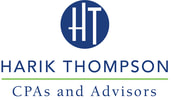|
For some simple estates, all you may need to do is split your assets in equal proportions among heirs. In other instances, however, you have more complex issues to confront: How can you apportion a family business, especially one to which all beneficiaries do not contribute the same sweat equity? How should you approach real estate, such as a house or vacation home? How can you achieve the most tax-efficient division of your property? Keep illiquid assets intact
Many assets cannot be neatly carved up. One example is a family home. Assuming multiple beneficiaries, each may have different preferences. Some might wish to maintain it, while others would prefer to sell their share. But is the cash readily available? Managing real estate is an ongoing, challenging project and may not be feasible among the group. You may be hoping your house can remain under family ownership, rather than be sold to strangers. But somebody has to come forward with the desire and the resources to fund the enterprise. Dealing with bricks and mortar is relatively easy, though, compared with allocating shares in a family business. Your children may have demonstrated diverse levels of enthusiasm, skill, interest and attention in their involvement with it. Moreover, selling a going concern risks significantly diminishing its value. It is clearly optimal to minimize business disruptions that might impact customer relationships and reputation. Seeking an equitable solution Now comes the hard thinking as you struggle to achieve a fair result. First, consider past and present circumstances relating to each of your heirs.
Next, as you design a succession plan or divvy up the estate, you need to focus on the beneficiaries' priorities and goals, as value holds different meanings for everyone. Emotional and sentimental worth often play as large a role as dollars and cents. One child may care about a home or business for the tradition it represents; another may concentrate on its monetary realizable value. Remember the next generation, too, as well as stepchildren or other future heirs. Enter insurance Life insurance offers a tidy answer to address a liquidity dilemma. Not only does it allow for stable estate planning, but it also can be tuned to create tax efficiencies. It enables a testator to pass a home to those who really want to live in it, or a business to whoever wants and is able to run it, while reserving an insurance payout to the other heirs so they will not be shortchanged. Create a list of your distributable assets. Then choose a focus year, meaning a date in the future at which point the policy can vest; project the values based on that date in time; on death, the insurance cover becomes the amount payable. For tax purposes, the policy's cash values may grow with tax-free withdrawals and loans where permissible. Speak with your legal and financial advisers about the options for an equitable distribution for your estate and a fair, individual treatment for each heir. Comments are closed.
|
Newsletter articles are posted every 2 weeks. If you would like to have our e-newsletter delivered directly to your inbox, please sign up. Your information is confidential; you can unsubscribe at any time. Subscribe. Categories
All
|
Proudly powered by Weebly

 RSS Feed
RSS Feed